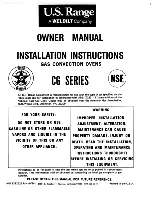
12
Plastic
Many plastic containers are designed for microwave use, but do not use for cooking foods high in
sugar or fat or foods that require long cooking times e.g. brown rice.
Only use Tupperware
®
containers if they are designed
for microwave use. Do not use
Melamine.
Never cook in margarine
cartons or yoghurt pots, as
these will melt with the heat
from the food.
Paper
Plain white absorbent kitchen paper (kitchen towel) can be
used for microwave cooking e.g. covering blind pastry
cases and for cover ing bacon to prevent splattering USE
FOR SHORT COOKING TIMES ONLY. NEVER RE-USE A
PIECE OF KITCHEN TOWEL. ALWAYS USE A FRESH
PIECE OF PAPER FOR EACH DISH.
Avoid kitchen paper containing manmade fibres.
If you are using branded re-cycled kitchen towel, check first
that it is recommended for microwave use. Do not use
waxed or plastic coated cups or plates as the finish may
melt. Greaseproof paper can be used to line the base of
dishes and to cover fatty foods e.g. bacon rashers to stop
them splattering. White paper plates can be used for
SHORT RE HEATING TIMES.
Cling film
Microwave cling
film can be used
for covering food
that is reheated
by microwave. It
is also useful for
covering food to
be cooked, but care should be taken to avoid
the film being in direct contact with the food.
e.g. Do not line dishes with cling film.
Roasting bags
Roasting bags are useful when slit up one
side to tent a joint, for roasting by power and
time. Do not use the metal twists supplied.
Aluminium foil
Small amounts of smooth aluminium foil can
be used to SHIELD joints of meat during
defrosting and cook ing, as the microwaves
cannot pass through the foil, this prevents the
parts shielded from overcook ing or
over de frost ing. Take care that the foil does not
touch the sides or roof of the oven, as this
may cause arcing and damage your oven.
Wicker, wood, straw baskets
Dishes will crack and could ignite. Do not use wooden
dishes in your microwave.















































